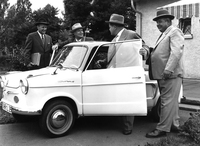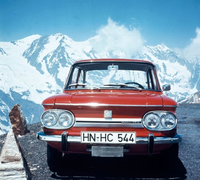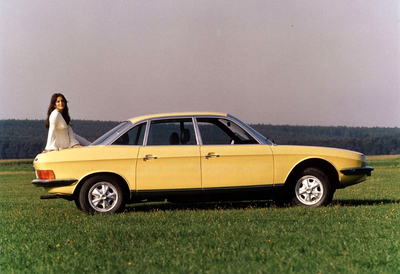Audi Tradition Takes Design Milestones To Techno Classica
LEARN MORE: Audi Archive (39,356 Citations): News, Reviews, Opinion, Video
• Classic car exhibition from April 5th to 9th – 200,000 visitors expected
• Audi Tradition with some fine pieces from NSU history
• NSU Ro 80 design icon elected "Car of the Year" 50 years ago
 |
INGOLSTADT, Germany - March 22, 2017: The Swabian brand NSU was a ground-breaking company from the times of the German economic upturn following the Second World War and, in 1955, it became the world’s largest motorcycle manufacturer. In 1957 – after almost 30 years of absence from automobile construction – NSU presented their first new model on four wheels at the Frankfurt motor show: the NSU Prinz. The smart compact car for four people had an air-cooled two-cylinder engine with 20 hp and a displacement of 583 cc. Due to the great success of the car, the company later released two sporty models – the NSU 1000 (1964) and NSU TT (1965). Both of the vehicles were used in motorsports and were especially successful in the mountain races which were very popular at the time. In 1967, the Neckarsulm-based company presented the most powerful of their TT models on the Hockenheimring: the NSU TTS. Its 996 cc rear-mounted engine delivered 70 hp and accelerated the 700-kilogram (1543.2 lb) car to a proud 165 km/h (102.5 mph). With the "Speed kit" available ex works for use in races, the TTS engine's output could even be brought up to 85 hp.
 |
At this year’s Techno Classica, AUDI AG’s historic division will present an NSU Prinz 30 (built in 1962), an NSU Sport Prinz (built in 1964) and an NSU 1000 TTS (built in 1970). A further star on the stand is the NSU Ro 80. In Essen, Audi Tradition will have two cars from this model series on show, built in 1969 and 1977 respectively. The NSU Ro 80 with a twin-rotor Wankel engine was presented to the public at the 1967 IAA in Frankfurt after five years of development work. In the same year, the Ro 80 was the first German vehicle to receive the "Car of the Year" accolade from an international jury. It was chosen because the vehicle set new standards for the road position, as well as for its safety, comfort and performance. What’s more, its futuristic, wedge-shaped body line was a true milestone in automotive design. The NSU Ro 80 was produced at the Neckarsulm plant between 1967 and 1977. In those ten years, 37,406 units rolled off the production line. The Ro 80 was the biggest, most avant-garde model produced by NSU, but it was also its last car. 1969 saw Volkswagen AG initiate the fusion of the company with Ingolstadt-based Auto Union GmbH to form Audi NSU Auto Union AG. Subsequently, in 1985, this union became AUDI AG as we know it today.
Audi Tradition will be displaying these automotive gems in hall 7 on a 350-square-meter (3767.4 sq ft) area. Lovers and collectors of miniature models can also obtain this year's model there: a limited production run of 333 NSU Ro 80 models with an orange paint finish in the scale 1:43. Further classic vehicles from the company’s history will be presented by the members of the ACI (Audi Club International) in hall 7.1. Over the Techno Classica’s five days, around 200,000 visitors are expected.
Swabians are an ethnic German people who are native to the cultural and linguistic region of Swabia, which is now mostly divided between the modern states of Baden-Württemberg and Bavaria, in southwest Germany.



